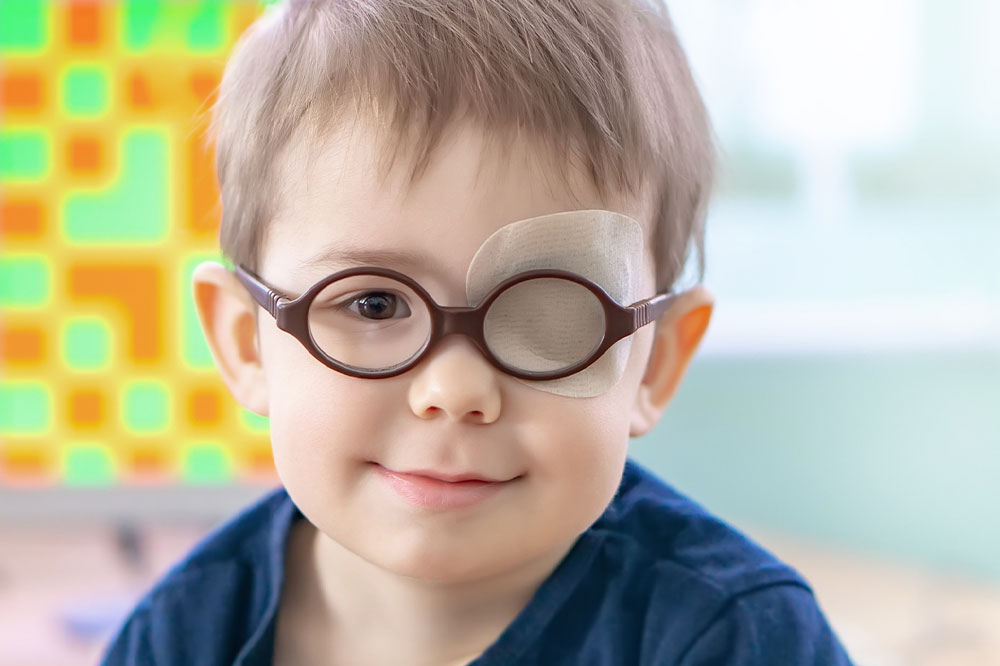10 facts to know about lazy eye
Amblyopia, or lazy eye, is a leading cause of decreased vision among children. This is a condition in which the brain suppresses information from one eye. This suppression can lead to a reduced understanding over time and cause issues such as squinting, difficulty throwing or catching, trouble reading, and more. Here are ten things you probably did not know about lazy eye.
Lazy eye develops in childhood
Lazy eye generally develops in children aged 0 to 7 years. This vision condition develops when one eye is unable to achieve normal visual acuity. In rare cases, adults may develop the condition later in life due to trauma or an eye condition that affects the vision in one eye.
Lazy eye is a common condition
In the country, approximately two percent of children are affected by this eye condition. A lazy eye is the most common cause of partial or complete blindness in one eye in childhood.
Lazy eye can be treated at any age
A long-held belief about the treatment of children with lazy eye was that it could not be treated after seven to nine years of age. But with advancements in research, any person can receive treatment for lazy eye at any time. Though the earlier it is detected and treated, the better it is.
Lazy eye can be treated without surgery
The most common treatments for amblyopia are glasses and eye patches. These treatments can help the weaker eye coordinate with the brain. Other treatments include a Bangerter filter placed on the eyeglass lens of the stronger eye to stimulate the weaker eye. However, for treating strabismus, eye muscle surgery may be recommended. Strabismus is a condition where the eyes are pointed in two different directions. Kids with lazy eyes and cataracts may also require surgery.
Lazy eye can be with or without a turned eye
Lazy eye occurs when the brain favors one eye due to poor vision in the other eye. This condition can be with or without turned eyes. The reason is that there are two common types of amblyopia – refractive amblyopia and strabismic amblyopia. Refractive amblyopia occurs when there is a high degree of farsightedness or near-sightedness in one or both eyes. The brain may rely on the stronger eye while ignoring signals from the weaker eye. Strabismic amblyopia is present as a crossed eye, misaligned eye, or turned eye. However, strabismic amblyopia can lead to lazy eye when the crossed eye is used less than the uncrossed one.
Lazy eye can cause temporary or permanent loss of vision
Lazy eye can worsen over time. If left untreated, it can cause temporary or permanent loss of vision. This loss of vision can include loss of depth perception and 3-D vision. As the brain cannot process the visual signals from the lazy eye with time, the communication between the brain and the weaker eye deteriorates further, leading to permanently reduced vision in that affected eye.
Lazy eye may not always be detected at a vision screening
Lazy eye diagnosis can be missed by the pediatrician or during school vision screenings as they perform only basic screening and not comprehensive exams for specific eye conditions. Having your child’s eyes examined by an eye care professional at an early age is essential to catch any signs of lazy eye and seek immediate treatment. Regular eye exams also help ensure your child’s eyes are developing normally.
Lazy eye is not just an eye problem but also a brain-processing issue
Lazy eye results from developmental problems in the brain. When the parts of the brain responsible for visual processing do not function properly, problems arise with visual functions such as the perception of movement, depth, and fine detail. Vision therapy can be helpful in those affected by lazy eye. This therapy helps train the brain to work with both eyes equally.
Lazy eye causes reading difficulties, reduced fine motor skills, double vision, etc
Children or adults with lazy eye likely experience trouble reading. They may skip words, re-read words, or misread words. Blurry or double vision can affect their ability to see words or numbers accurately. Without a precise depth of perception, hand-eye coordination will also be reduced.
A common cause of lazy eye is strabismus
Of the three types, strabismic, refractive, and deprivation amblyopia, the most common cause of lazy eye is strabismus. Though there is suppression of vision in all three types, a noticeable eye turn is present in those with strabismic amblyopia. As the eyes do not receive similar images due to poorly aligned eyes, the brain adapts to ignore the visual input from the misaligned eye leading to lazy eye.
Early diagnosis of lazy eye is critical as it significantly improves treatment outcomes and can help prevent long-term vision problems.

